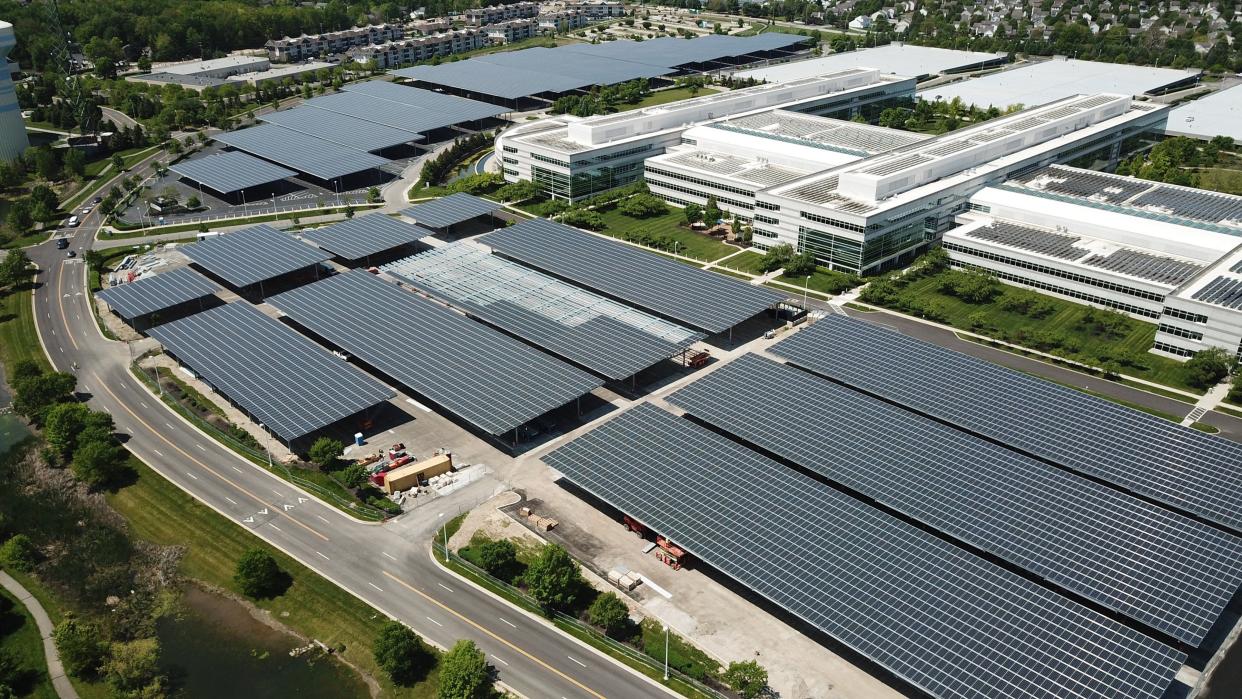Energy demand expected to double. Solar energy needed in Ohio.

Will Hinman is the executive director of the Utility Scale Solar Energy Coalition of Ohio and a founding partner at Bowers Hinman Capitol Affairs.
From data centers to electric vehicles to central Ohio’s new Intel plant, the growth sectors in today’s world – and particularly around Columbus – are driven by electricity.
The Columbus Dispatch reported that AEP expects power demands in our region to double by 2028. This demand, however, raises questions about whether supply can keep up. In fact, PJM Interconnect, our region’s electricity grid operator, is warning of potential electricity shortfalls.
This could impact families, businesses and the economy across central Ohio.
Fortunately, utility scale solar is playing — and can increasingly play — a vital role in meeting the demand. To effectively ensure electric reliability, lower costs, and help regain our country’s status as an energy exporter, Ohio should embrace a robust and diverse portfolio of domestic energy resources that includes utility scale solar.
Despite utility scale solar being the cheapest form of vital energy generation today, a vocal minority has mustered opposition to solar projects citing reliability, aesthetics, and land use concerns.
Solar panels provide crucial energy supply to meet the grid’s peak demand during the day, when homeowners run air conditioners and appliances, and as manufacturing facilities operate at high capacity. Utility scale solar energy generation is increasing – not decreasing – the resiliency and dependability of our grid by addressing shortages.
To blend the contrast between agricultural landscapes and solar development, the solar industry has worked with regulators to implement rigorous standards. New utility scale solar sites must incorporate vegetative screening, agricultural style fencing, strict drainage and water management specifications, stringent setbacks from roadways and adjacent parcels, and other neighbor-friendly practices.
Intel will add jobs to Ohio. Will costly project also dry wells and bring toxins, sickness?
Solar developers provide farmers with the ability to supplement their income by voluntarily entering into lease agreements. Farm income is expected to decline in the near future, so this additional income can help make ends meet and keep family farms in local hands.
At the onset of a solar development, a decommissioning bond is required upfront, so developers are on the hook for retiring equipment and returning land to agricultural use at a project’s end. Unlike other forms of development, no concrete is poured to install solar panels, and developers must minimize the environmental impact of construction.
Furthermore, many projects include pollinator habitats and row crops between panels to maintain an agricultural presence.
The agricultural industry – much of which produces corn in Ohio for energy, not food – has achieved remarkable improvements in productivity. Increased yields will more than offset the mere 1% of all tillable acreage in Ohio that solar projects may eventually occupy according to permitting trends.
The solar industry is also contributing billions of dollars to communities throughout Ohio. Through voluntary payments and payments in lieu of taxes, developers fund education, first responders, libraries, social services, and recreation in the counties in which they operate. Projects also create thousands of construction jobs and generate payroll tax.
Ohio would be remiss to turn down desperately needed domestic energy in today’s economy and geopolitical landscape.
Utility scale solar energy empowers landowners, enriches communities, preserves farmland, strengthens national security by increasing energy independence, fosters economic development, and reinforces our grid as electricity demand increases.
Will Hinman is the executive director of the Utility Scale Solar Energy Coalition of Ohio and a founding partner at Bowers Hinman Capitol Affairs.
This article originally appeared on The Columbus Dispatch: Electricity shortfalls expected to hit Columbus area. Solar needed.

